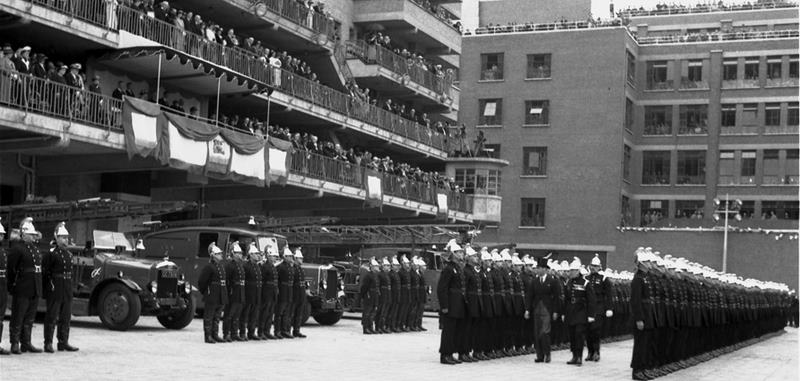
The new Headquarters of the London Fire Brigade at 8 Albert Embankment was opened with a great fanfare on Wednesday 21 July 1937 by King George VI and Queen Elizabeth. They watched as 150 firefighters paraded for royal inspection alongside Chief Officer Major Morris and a host of dignitaries. The LFB Band provided musical accompaniment at the beginning and end of the event.
The HQ incorporated a new state-of-the-art fire station for Lambeth and the floating fire boat station was established, opposite the building, on the River Thames.
The new purpose-built premises replaced the previous Brigade Headquarters in Southwark Bridge Road which had been in use since 1878.
The building was designed by E P Wheeler, Architect to London City Council. The cost of the build and equipping the station was approximately £389,000. The structure was created from a steel frame with brick cladding. The grandstand-like rear elevation with tiered balconies could accommodate large crowds of spectators to watch firefighting displays and resembled the bridge of a ship, consciously reflecting the Brigade’s naval connections.
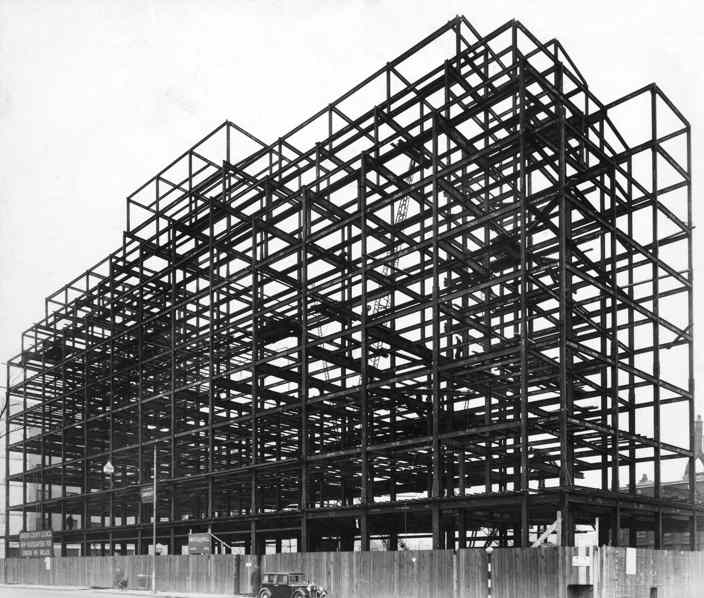
The steel frame under construction
The front of the striking art deco building was decorated with sculpted reliefs by Stanley Nicholson Babb and Gilbert Bayes. The sculptures include firefighters using what would have been the most modern examples of uniform and equipment used by the Brigade in 1937, alongside mythical imagery including Phoebus the sun god in his chariot with the sun's rays behind, detailed in gold mosaic tiles.

The fire station was equipped with an appliance bay for seven fire engines and a 10-storey high training tower. As well as the fire station, additional floors were designed to house the administrative and communications teams including the Control Room and had accommodation for officers and their families.
The site at Lambeth also had a workshop, known by firefighters and staff as ‘Rear Block’ due to its location behind the main building. The specialist departments included carpentry and engineering, which made it equipped to deal with any type of repair needed across the Brigade’s fleet.
The building, including the fire station, was Grade II Listed in 2002 and Historic England noted that the building is 'of special architectural interest as a well-composed and externally unaltered 1930s building which, while in the streamlined Moderne idiom, upholds the Arts and Crafts ideal of collaboration between architecture and sculpture'.
A central feature of the new Headquarters was a Memorial Hall, a beautiful, reflective space to commemorate firefighters and Brigade staff that had lost their lives on duty.
The original scheme had two memorials by significant early 20th-century sculptor Gilbert Bayes.
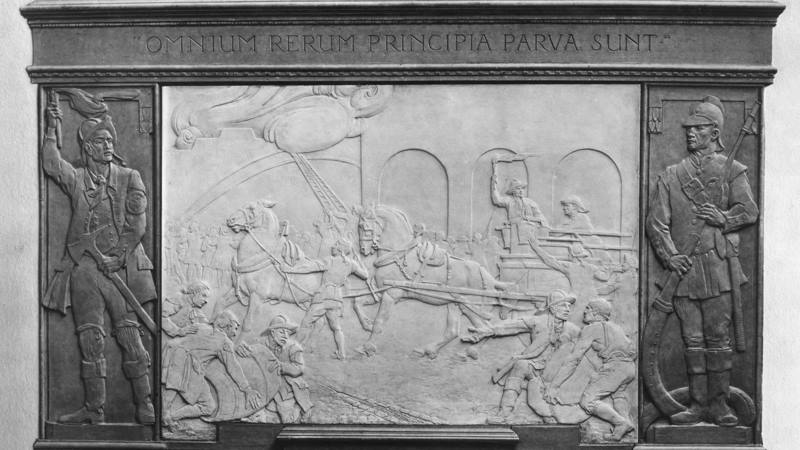
The first commemorates the establishment of Metropolitan Fire Brigade in 1865, depicting an 18th century firefighting scene with firefighters in the distinctive the leather hats of the period. This memorial includes framed illuminated manuscripts, hidden behind bronze doors to keep their colours fresh, that list the fire insurance companies that had firefighting crews.
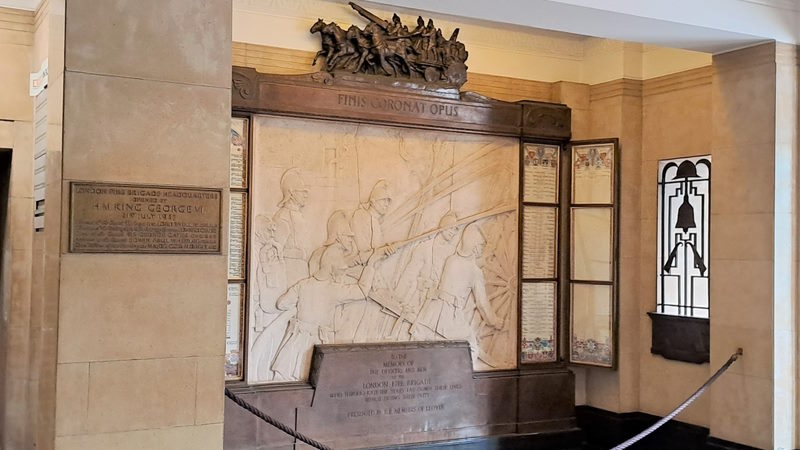
The second Bayes memorial was presented to LFB by Lloyds Underwriters for the opening of the new Headquarters. This firefighting scene is contemporary, featuring firefighters in the brass helmets that were introduced by Massey Shaw in 1868.
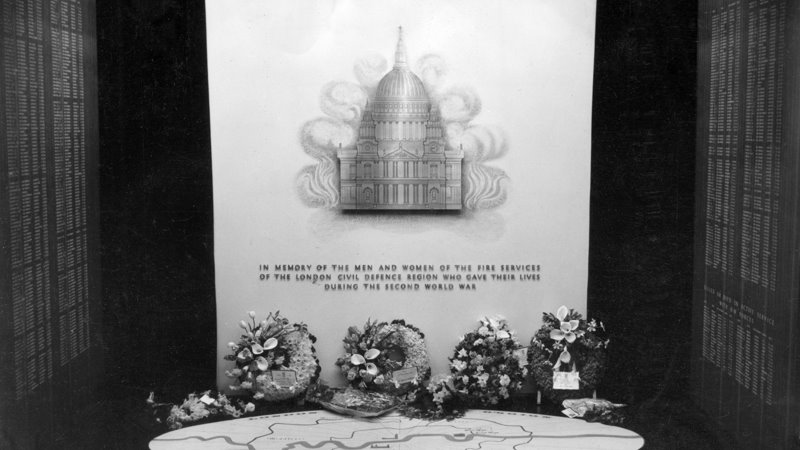
The Second World War saw great loss of life across London, including amongst firefighters and Fire Brigade staff. The Hall also includes a simple memorial tablet to London County Council staff who died in the two World Wars, with gilded key pattern. A 1950s floor panel map shows the areas of the London Civil Defence Region Fire Services in the Second World War. Above it, a wall-based memorial features St Paul’s Cathedral, a symbol of resilience to Londoners through the Blitz and lists the names of those lost in the war, in the course of duty.
A more modern sculpture by John Mills has been placed in this area in the mid 1980s, which is a smaller version of the National Fire Fighters’ Memorial located near St Paul’s Cathedral.
London Fire Brigade’s band had its own stand built, and this also originally housed the LFB Museum. As early as the 1930s LFB was collecting objects which illustrated the history of the fire service in London. The stand was demolished in the 1980s to make way for a large extension to house a new Control Room.
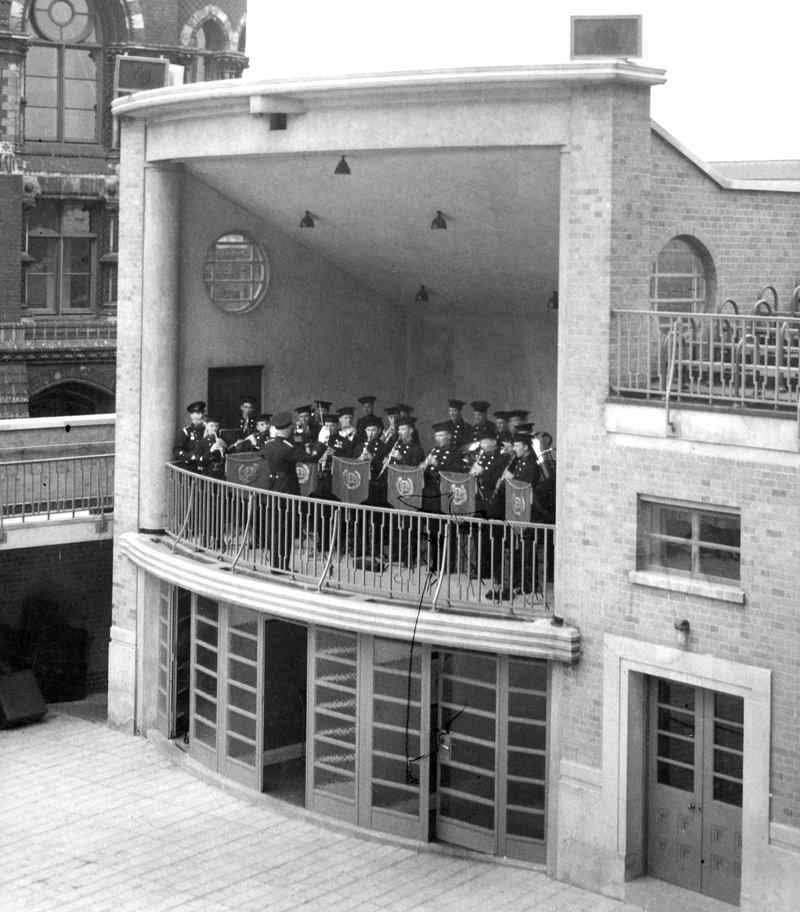
After London suffered some bombing raids during the First World War, the new London Fire Brigade headquarters was designed to withstand attack from the air. It was from here that the capital's firefighting operations were run during the Second World War.
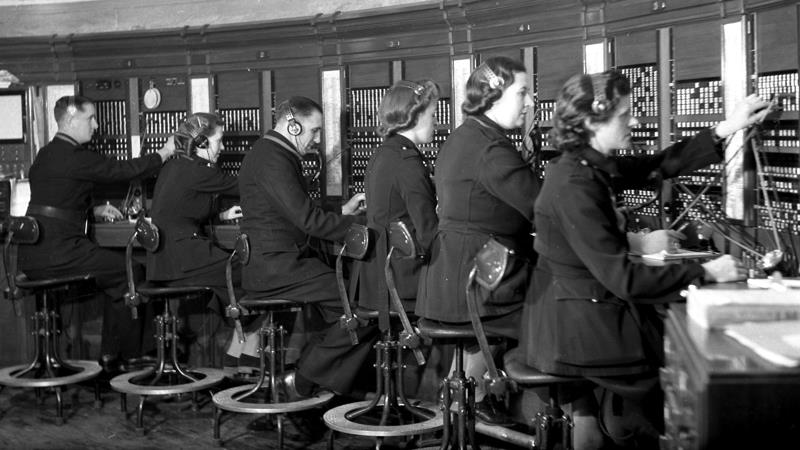
National Fire Service personnel at the telephone switchboard of the control room at Lambeth Headquarters, in around 1941
When the Second World War began on 2 September 1939, Lambeth Fire Station had been open for just over two years. The bombing that London suffered over the next few years proved to be one of the biggest challenges Lambeth Fire Station would ever face. Due to the headquarters of the London Fire Brigade being located here, the coordination of firefighters throughout the dark days of the blitz was orchestrated from Lambeth Fire Station.
In Lambeth alone between the 7 October 1940 and the 6 June 1941, the Luftwaffe dropped 1,215 high explosive bombs. Fortunately the station survived the Blitz; the closest bomb fell on Black Prince Road but caused no damage to the building.
Throughout the 1950s and early 60s, the upper floors were also used as the Brigade’s training school. Over the years, Brigade personnel worked on developing many unique vehicles and pieces of equipment for London Fire Brigade, which were then often built in the onsite workshops. The latest technology was always used to help firefighters tackle blazes, be prepared at incidents and save lives.
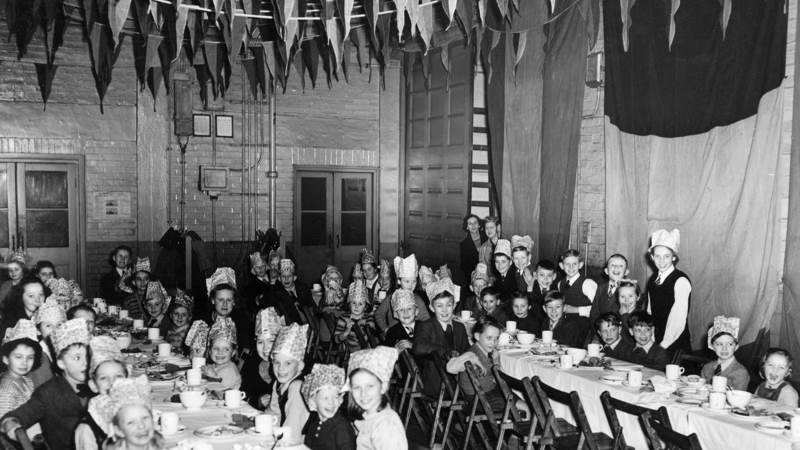
Christmas party at Lambeth in 1952
There was a busy social element to working in the building, and the large canteen on site was also used to host dances, pantomimes, Christmas parties and other social events across many years.
In 1966 the Brigade celebrated its 100th anniversary in style with a visit to the Lambeth Headquarters from Queen Elizabeth. The Queen noted during the visit that 'the Brigade has established, in peace and war, a reputation for skill & gallantry and a tradition of service to the public which are second to none'.
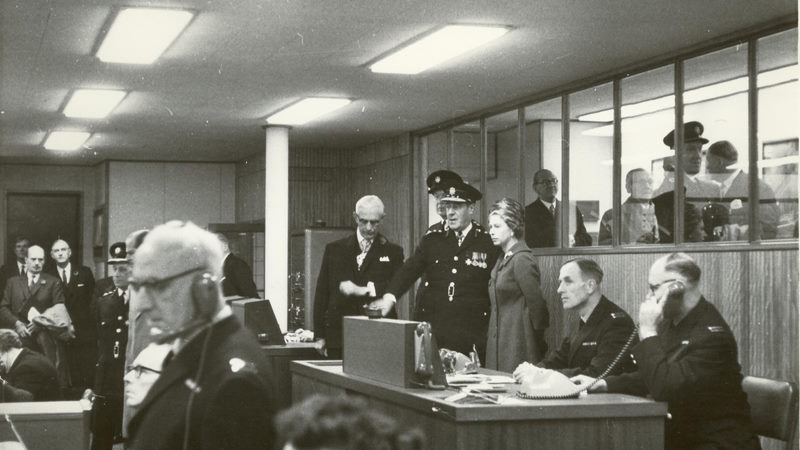
The building continued to act as the headquarters for London Fire Brigade, until it was relocated to Union Street, Southwark, in 2007. Lambeth Fire Station continues to operate from the building, protecting key locations including Waterloo Station, the Imperial War Museum and St Thomas’ Hospital.